Why Learning How to Make a Vodka Martini is Essential for Any Home Bartender
Learning how to make a vodka martini is one of the most valuable cocktail skills you can master. This iconic drink combines just three simple ingredients - premium vodka, dry vermouth, and a garnish - yet creates one of the most sophisticated cocktails in the world.
Quick Answer: Essential Steps for a Perfect Vodka Martini
- Chill your martini glass with ice water
- Combine 2.5 oz vodka and 0.5 oz dry vermouth in a mixing glass with ice
- Stir for 30 seconds until well-chilled
- Strain into the chilled glass
- Garnish with a lemon twist or olives
The beauty of the vodka martini lies in its simplicity and elegance. As one expert noted, "a proper martini is an neat balancing act that showcases both the base spirit and the skill of its creator." With only premium vodka and dry vermouth as the main components, there's nowhere to hide - every ingredient must be perfect.
The classic 3:1 ratio of vodka to vermouth creates a balanced martini that lets the vodka's character shine while maintaining complexity. Whether you prefer it dry (less vermouth), wet (more vermouth), or dirty (with olive brine), mastering the basic technique opens the door to endless customization.
As Sylwester Skóra, founder of Two Flags™ Vodka, I've spent years perfecting the art of vodka production and cocktail crafting, understanding that knowing how to make a vodka martini properly is fundamental to appreciating premium spirits. My Polish heritage and American innovation have taught me that the best cocktails start with the finest ingredients and proper technique.
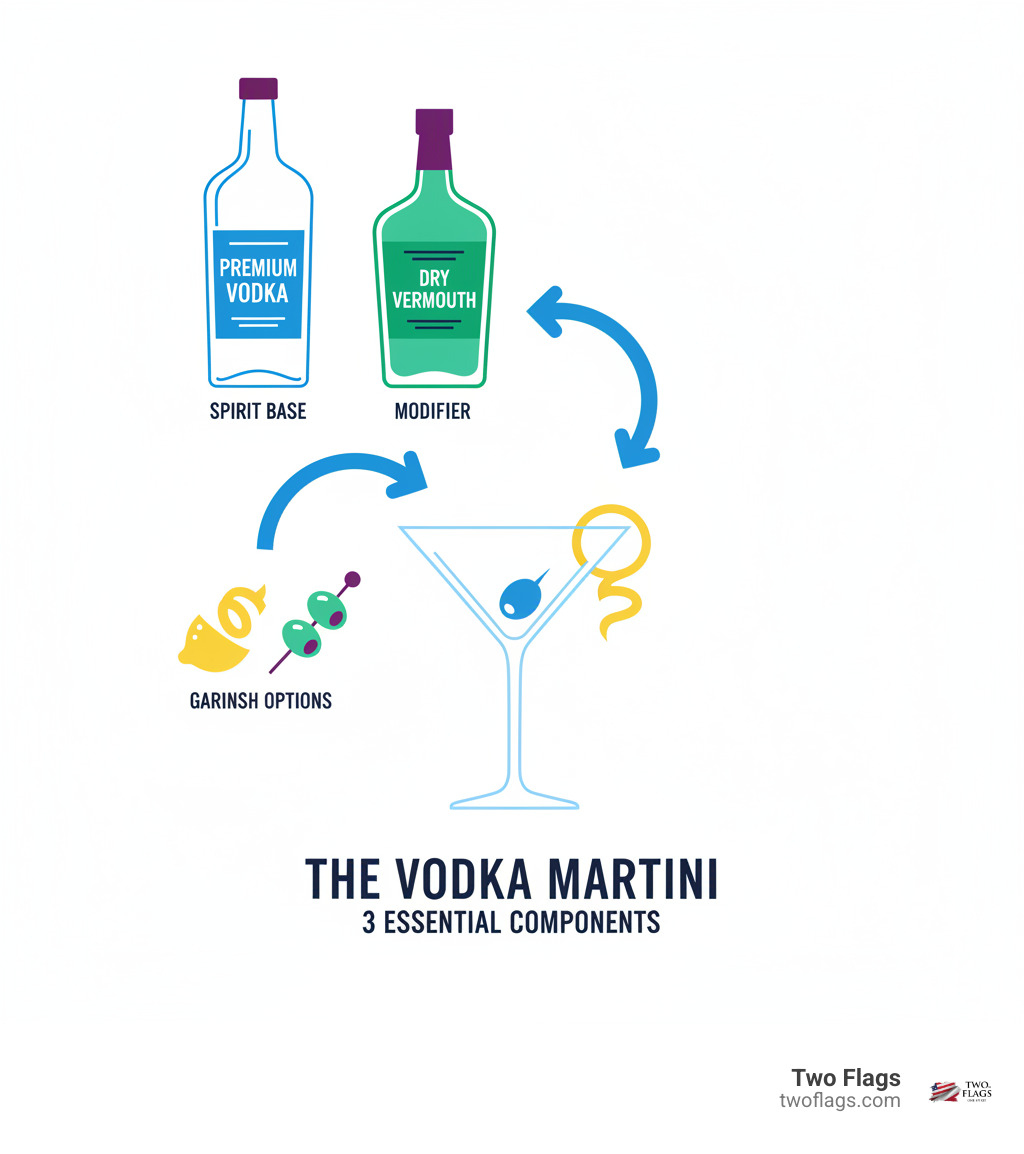
Simple guide to how to make a vodka martini:
The Anatomy of a Perfect Vodka Martini
Think of a vodka martini as a beautiful symphony with just three instruments. Each one needs to be perfectly tuned, because there's nowhere to hide when you're working with such simple ingredients. The magic of learning how to make a vodka martini lies in understanding that this is a spirit-forward cocktail where quality trumps quantity every single time.
Unlike fruity cocktails loaded with mixers and syrups, the vodka martini puts your ingredients front and center. These three essential components become the building blocks of flavor that make or break your drink. When you master each element, you're well on your way to cocktail perfection.
The Spirit: Why Premium Vodka Matters
Here's where many people get it wrong - they think vodka is just vodka. That "neutral spirit myth" has led to countless disappointing martinis over the years. The truth is, premium vodka makes all the difference in the world.
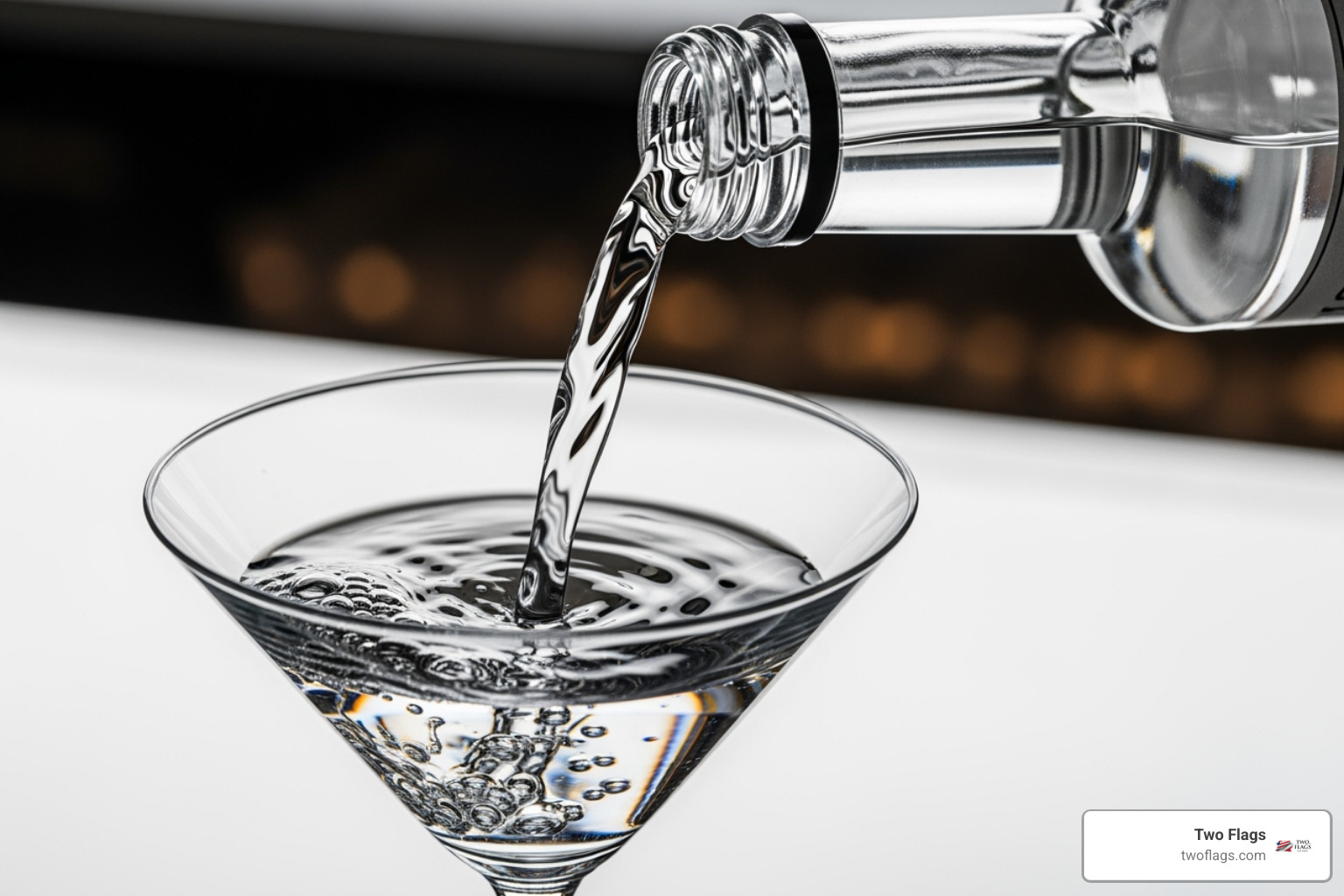
When you pour Two Flags One Spirit into your mixing glass, you're getting an ultra-premium, organic, and gluten-free vodka that's authentically crafted in Poland. The Beverage Testing Institute didn't call it "Exceptional" by accident. Every sip delivers the smoothness and clean finish that makes a martini truly shine.
The raw materials matter enormously. Organic grains create a different foundation than cheaper alternatives. The distillation process refines that character, and the filtration methods determine the final smoothness and mouthfeel you'll experience.
In a martini, there's no fruit juice or cola to mask harsh edges. Your vodka needs to stand proud on its own, delivering that silky texture without any alcoholic heat burning your throat. This is exactly why premium vodka like Two Flags One Spirit becomes essential - it provides that clean canvas that lets every other ingredient shine.
Want to dive deeper into what makes great vodka? Check out Why Vodka Filtration Matters: A Deep Dive and Your Ultimate Guide to Picking the Perfect Vodka.
The Modifier: Understanding Dry Vermouth
Now let's talk about the supporting actor that can make or break your martini - dry vermouth. This isn't just any wine you have lying around. Vermouth is a fortified wine that's been strengthened with distilled spirits and aromatized with botanicals, herbs, and spices.
For a classic vodka martini, you want dry vermouth (sometimes called French vermouth). It's pale, crisp, and much less sweet than red vermouth. This creates those subtle herbal notes and botanical complexity that prevent your martini from tasting like a glass of cold vodka.
Think of dry vermouth as the seasoning in your cocktail. It adds layers of flavor and a gentle bitterness that balances the vodka's smoothness. Different brands offer different flavor profiles, so don't be afraid to experiment until you find your favorite.
Here's a storage tip that will save your cocktails: refrigerate your vermouth after opening. Since it's wine-based, vermouth oxidizes quickly once exposed to air. Keep it cold, and your martinis will taste fresh and vibrant every single time.
The Garnish: More Than Just Decoration
Don't underestimate the power of a proper garnish. This isn't just pretty decoration - it's a crucial flavor contributor that affects both taste and aroma with every sip.
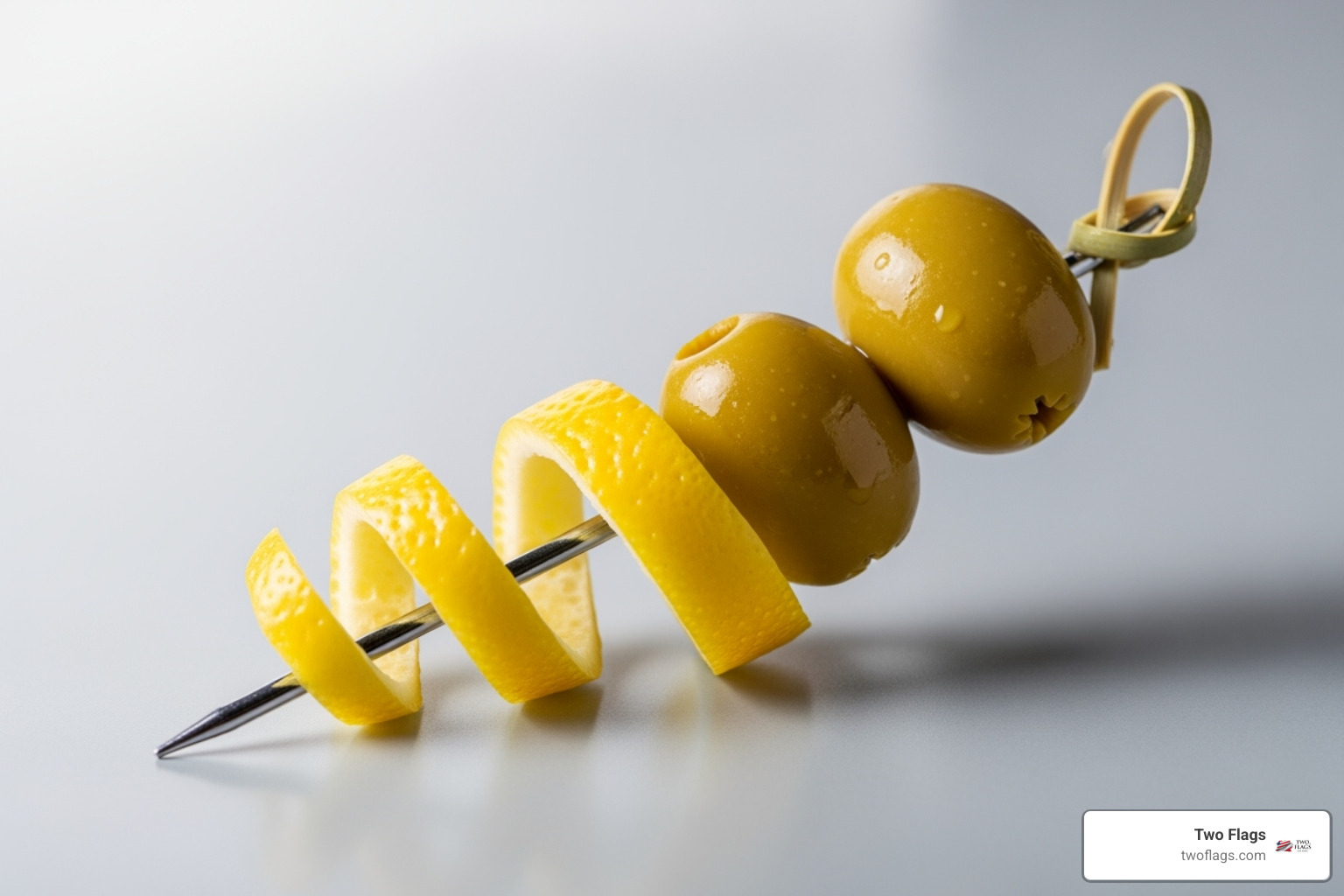
The lemon twist brings bright, citrusy notes that dance on your nose before you even take a sip. To do it right, pare a strip of lemon peel (skip the bitter white pith), then express those aromatic oils by pinching the peel over your drink. Rub it around the rim for extra impact, then drop it in. The visual appeal is just a bonus.
Olives take your martini in a completely different direction, adding salty, briny flavors that create a beautiful contrast with the clean vodka. Three olives on a pick are traditional (some say it's good luck), and they provide that savory, umami richness that many martini lovers crave.
For something different, try a cocktail onion to create a Gibson martini. It offers a sharper, more pungent flavor that's definitely not for everyone, but has its devoted fans.
The choice between salty and citrus garnishes fundamentally changes your martini experience. Both have their place, and understanding their impact helps you create the exact drink you're craving.
How to Make a Vodka Martini: The Classic Method
Now that we understand the essential ingredients, let's dive into the proper technique for crafting this neat cocktail. The goal is to achieve the perfect chill and dilution, ensuring a smooth, crystal-clear drink that showcases your premium vodka. This step-by-step guide will walk you through how to make a vodka martini that would impress any connoisseur.

The beauty of the classic method lies in its precision and simplicity. When you master this technique, you'll understand why the martini has remained unchanged for over a century. It's all about achieving perfect chill and dilution while maintaining the drink's crystal-clear appearance.
Essential Tools and Glassware
Having the right tools makes all the difference in cocktail crafting. Think of these as your martini-making essentials - each one serves a specific purpose in creating the perfect drink.
You'll need a mixing glass (a sturdy glass or even a pint glass works perfectly) where you'll combine your ingredients with ice. A bar spoon with its long handle is designed specifically for stirring cocktails smoothly. Your jigger or measuring tool is essential for precise measurements - consistency is key to a great martini every time.
Don't forget your strainer (either a Hawthorne or julep strainer) to separate your perfectly chilled cocktail from the ice. Finally, you'll want a chilled martini glass or coupe glass - the iconic vessel that makes your martini feel special.
Chilling the glass is absolutely crucial. Fill it with ice and water while you prepare the drink, or place it in the freezer for at least 15 minutes. A cold glass keeps your martini colder for longer and shows you take your craft seriously.
Step-by-Step Guide on How to Make a Vodka Martini
Follow these steps for a perfectly crafted vodka martini that would make any bartender proud.
Start by chilling your glass - this is non-negotiable for a truly exceptional martini. Fill it with ice and water and let it sit while you mix, or place it in the freezer beforehand.
Next, combine your ingredients in the mixing glass. Use your premium Two Flags One Spirit vodka and dry vermouth. The vodka-to-vermouth ratio is where personal preference really shines. A 3:1 ratio (like 3 oz vodka to 1 oz vermouth) provides beautiful balance between the spirit and the herbal notes of the vermouth. If you prefer a drier martini, try a 5:1 ratio with 2.5 oz vodka to 0.5 oz vermouth.
Now comes the crucial stirring technique. Fill your mixing glass about 3/4 full with large, dense ice cubes. Stir for 30 seconds (or even up to 40 seconds) with your bar spoon, moving in smooth, consistent circles. This ensures the drink is thoroughly chilled and properly diluted, creating that silky texture and crystal-clear appearance we're after.
For the final pour, discard the ice water from your chilled martini glass. Place your strainer over the mixing glass and strain the cocktail directly into the empty, cold glass. The pour should be smooth and precise.
Finally, add your garnish. For a lemon twist, express the oils over the drink before dropping it in. For olives, spear three on a cocktail pick for that classic presentation.
The result? A perfectly balanced vodka martini that showcases the quality of your Two Flags One Spirit vodka while delivering that sophisticated experience you're looking for.
The Great Debate: Shaken vs. Stirred
Few cocktail instructions are as famous as James Bond's insistence on his martini being "shaken, not stirred." This iconic line has sparked countless debates in bars around the world and made many people wonder about the "right" way to make a martini. While it certainly makes for memorable cinema, the real question is: what does the science behind each method actually do to your drink?
When you're learning how to make a vodka martini, understanding the difference between shaking and stirring isn't just cocktail trivia—it's the key to getting the exact taste and texture you want. Each technique creates dramatically different results in terms of temperature, clarity, texture, and dilution.
Why Stirring is the Classic Method
Ask any experienced bartender about spirit-forward cocktails like the vodka martini, and they'll almost always recommend stirring. There's solid science behind this preference, and once you understand it, you'll see why stirring has remained the gold standard for decades.
Stirring creates a silky texture that's simply impossible to achieve through shaking. When you gently stir your Two Flags One Spirit vodka and vermouth with ice, you're chilling the drink without introducing air bubbles. This results in a smooth, almost velvety mouthfeel that allows the spirit to coat your palate beautifully.
The crystal clear appearance of a stirred martini is part of its visual appeal. Stirring keeps the drink perfectly translucent, showcasing the purity of premium vodka. There are no tiny air bubbles or ice shards to cloud the liquid—just pure, neat clarity that looks as sophisticated as it tastes.
Controlled dilution might be the most important benefit of stirring. You can stir until the drink reaches the perfect temperature while adding just the right amount of water from melting ice. This gentle dilution softens the alcohol's edge without watering down the complex flavors. It's all about preserving spirit integrity—maintaining those subtle notes that make premium vodka worth savoring.
The Wikipedia entry on the Martini cocktail confirms that stirring with ice has been the traditional method for generations of bartenders who understood that spirit-only cocktails deserve this gentle treatment.
When Shaking Might Be Preferred
While stirring is the classic choice for how to make a vodka martini, shaking does have its place in the cocktail world. Some people genuinely prefer what shaking brings to the table.
Shaking creates a colder temperature almost instantly. The vigorous action chills the drink faster and more than stirring ever could. You'll also get tiny ice crystals that some drinkers enjoy—though purists would argue these don't belong in a proper martini.
The cloudy appearance from shaking might look wrong for a traditional martini, but it's actually perfect for cocktails with juice, dairy, or egg whites. The aeration creates a frothy texture that works beautifully in drinks designed for it.
At the end of the day, personal preference matters. If you genuinely enjoy the colder, more diluted, and aerated texture of a shaken martini, that's your choice to make. However, when you're using a premium vodka like Two Flags One Spirit, stirring really allows those carefully crafted qualities to shine through.
Here's how the two methods compare:
| Feature | Stirred Martini | Shaken Martini |
|---|---|---|
| Temperature | Very cold, but slightly warmer than shaken | Arctic cold |
| Clarity | Crystal clear, translucent | Cloudy, frothy |
| Texture | Silky, smooth, viscous | Lighter, aerated, sometimes with ice shards |
| Dilution | Controlled, minimal | More dilution, faster ice melt |
The choice is ultimately yours, but understanding these differences helps you make an informed decision about your perfect martini.
Customizing Your Drink: Dry, Dirty, and Beyond
Now comes the exciting part of learning how to make a vodka martini – making it uniquely yours. The beauty of this classic cocktail lies in its adaptability. Once you've mastered the basic technique, you can adjust every element to match your taste preferences perfectly.
The terminology around martinis might sound intimidating at first, but it's actually quite straightforward. Each term simply describes a different approach to the vermouth ratio or the addition of savory elements. Think of it as your personal cocktail vocabulary that helps you communicate exactly what you want.
Finding your perfect recipe is half the adventure. Some people find they love the botanical complexity of a wetter martini, while others prefer the spirit-forward punch of an extra-dry version. And if you're curious about enjoying premium vodka on its own, our guide on No Mix, No Fuss: Top Vodkas for Sipping Solo explores how exceptional vodka like Two Flags One Spirit shines when sipped neat.
How to Make a 'Dry' vs. 'Wet' Vodka Martini
The dry and wet classifications are all about the vermouth ratio, and they dramatically change your martini's personality.
A dry martini uses less vermouth, typically in a 5:1 or 6:1 ratio with your Two Flags One Spirit vodka. Here, the vermouth acts more like a supporting character – you'll taste its herbal notes, but they won't dominate the clean, smooth character of the premium vodka.
For those who want even less vermouth, the extra-dry martini takes minimalism to an art form. Some bartenders simply rinse the glass with vermouth and pour it out before adding the vodka. Others add just a few drops. Winston Churchill famously preferred his martinis so dry that he'd simply glance at the vermouth bottle while mixing – though we recommend at least a small splash for the best flavor balance.
On the flip side, a wet martini accepts the vermouth's botanical complexity with a 2:1 or even 1:1 ratio. This creates a softer, more aromatic drink where the herbal and floral notes of the vermouth dance alongside the vodka rather than hiding in the background. It's an excellent choice if you enjoy the interplay between different flavor components.
How to Make a 'Dirty' Martini and Other Savory Twists
Sometimes you want your martini to venture into savory territory, and that's where these variations shine.
The dirty martini adds olive brine to the mix, typically about 0.5 oz alongside your vodka and vermouth. This transforms the drink entirely, adding a salty, briny character that pairs beautifully with the clean finish of premium vodka. The saltiness actually improves the vodka's smoothness while adding complexity.
For true brine enthusiasts, the filthy martini cranks up the olive juice even more. Some versions use blue cheese-stuffed olives as garnish, creating an savory experience that's almost like a liquid appetizer.
The Gibson martini takes a different savory approach by using cocktail onions instead of olives or lemon twist. The onions provide a sweet-and-pungent flavor that creates an entirely different drinking experience while maintaining the martini's neat simplicity.
Exploring Other Popular Variations
Once you're comfortable with the basics, these creative variations offer new ways to enjoy your vodka martini skills.
The Vesper Martini, made famous by James Bond in Casino Royale, actually combines both gin and vodka with Lillet Blanc (a French aperitif wine). It's a complex, powerful drink that showcases how vodka can play well with other spirits.
You might encounter the term Kangaroo cocktail, which is simply another name for a vodka martini, particularly in older cocktail books where "martini" typically meant gin.
The Reverse Martini flips the traditional script entirely, using more vermouth than vodka – sometimes 2:1 in vermouth's favor. This creates a gentler, more wine-like drink that's perfect for those who want to ease into the martini world.
Finally, the Perfect Martini uses equal parts dry and sweet vermouth alongside your vodka, introducing a touch of sweetness and a completely different herbal profile that transforms the entire drinking experience.
Frequently Asked Questions about Making Vodka Martinis
As someone who's spent years perfecting the art of vodka production and cocktail crafting, I receive countless questions from home bartenders eager to master their martini technique. These are the most common questions that come up when people are learning how to make a vodka martini, along with the answers that will help you create consistently excellent drinks.
What is the ideal ratio of vodka to vermouth?
This question sparks more passionate debates than almost any other cocktail topic! The truth is, there's no single "perfect" ratio because taste is deeply personal. However, I can share the most popular approaches that work beautifully with our Two Flags One Spirit vodka.
For a classic dry martini, most traditionalists reach for a 5:1 ratio - that's about 2.5 ounces of vodka to half an ounce of dry vermouth. This lets the vodka's character shine while the vermouth adds just a whisper of herbal complexity.
If you're new to martinis, I recommend starting with a 3:1 ratio - three ounces of vodka to one ounce of vermouth. This creates more vermouth presence, allowing you to appreciate how the botanical notes complement premium vodka. It's an excellent learning ratio that showcases both ingredients.
For those who prefer their martinis bone dry, some bartenders use just a rinse of vermouth in the glass, or even a single drop. The key is experimentation - start with one ratio and adjust by small amounts until you find your sweet spot.
How do I properly chill a martini glass?
A properly chilled glass is absolutely essential for a great martini. There's nothing worse than watching your perfectly crafted cocktail warm up in a room-temperature glass! I use two reliable methods depending on how much time I have.
The ice and water method is perfect when you're mixing drinks on the spot. Simply fill your martini glass completely with ice, then top it off with cold water while you prepare your cocktail. Let it sit for a few minutes, then discard everything just before straining your martini. This chills the glass quickly and effectively.
For the ultimate cold experience, try the freezer method. Place your martini glasses in the freezer for at least 15 to 20 minutes before serving. This creates an arctic-cold vessel that keeps your martini at the perfect temperature from first sip to last drop.
The importance of a cold glass goes beyond just temperature - it prevents premature dilution and maintains that crisp, clean finish that makes a great vodka martini so satisfying.
How long does an open bottle of vermouth last?
This is a crucial question that many home bartenders overlook, and it can make the difference between a mediocre and exceptional martini. Since vermouth is a wine - specifically a fortified, aromatized wine - it behaves just like any other wine once you pop the cork.
The moment air hits your vermouth, oxidation begins working against those delicate herbal and botanical flavors that make your martini special. Unlike spirits, which can sit on your shelf indefinitely, vermouth starts losing its vibrant character relatively quickly.
Refrigeration is key to slowing this process down. Always store your opened vermouth in the refrigerator, just like you would with any other wine. Even with proper cold storage, you're looking at a shelf life of about one to three months for optimal flavor.
Here's a practical tip I swear by: dating the bottle. Write the date you opened it directly on the label with a permanent marker. This simple step ensures you always know whether your vermouth is still fresh enough to do justice to your carefully crafted martini. After three months, you might notice the vermouth tastes flat or overly oxidized - time for a fresh bottle!
Conclusion: Mastering the Martini
Mastering how to make a vodka martini is truly an art form that goes far beyond simply mixing two ingredients together. Throughout this journey, we've explored every element that transforms a simple combination of vodka and vermouth into one of the world's most sophisticated cocktails.
The foundation of any exceptional martini starts with quality ingredients. When you choose a premium vodka like Two Flags One Spirit, you're investing in the smoothness and clean finish that makes all the difference. Our ultra-premium, organic, and gluten-free vodka brings that authentic Polish craftsmanship to your glass, creating the perfect canvas for your martini masterpiece.
We've finded that proper technique matters just as much as premium ingredients. The gentle stirring motion that creates that silky texture, the precise timing that achieves perfect dilution, and the careful attention to temperature all contribute to the final experience. These aren't just fancy bartending tricks – they're the fundamentals that separate a good martini from an unforgettable one.
The beauty of the vodka martini lies in its endless customization possibilities. Whether you prefer yours bone dry with just a whisper of vermouth, perfectly balanced at a 3:1 ratio, or deliciously dirty with olive brine, you now have the knowledge to craft your ideal version. The perfect martini is the one that brings you the most joy.
As you continue your cocktail journey, don't be afraid to experiment and refine your technique. Each martini you make is an opportunity to perfect your craft and find new preferences. The principles we've covered – quality ingredients, proper technique, and thoughtful customization – will serve you well in every glass you create.
For those ready to explore even further into premium spirits, we invite you to dive deeper with Beyond the Basics: A Guide to Premium Vodka Brands. Here's to your martini mastery and the countless perfect cocktails ahead!




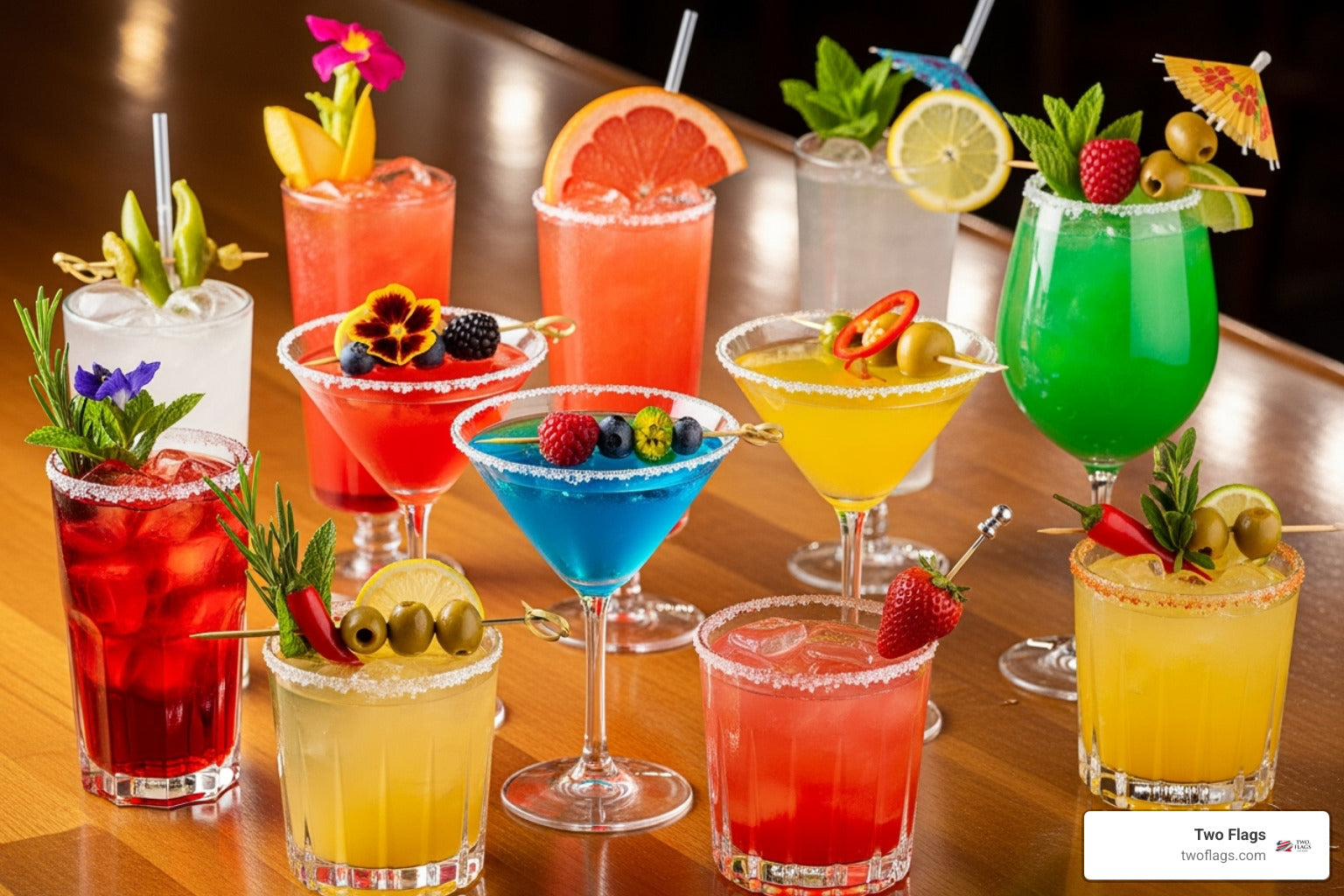
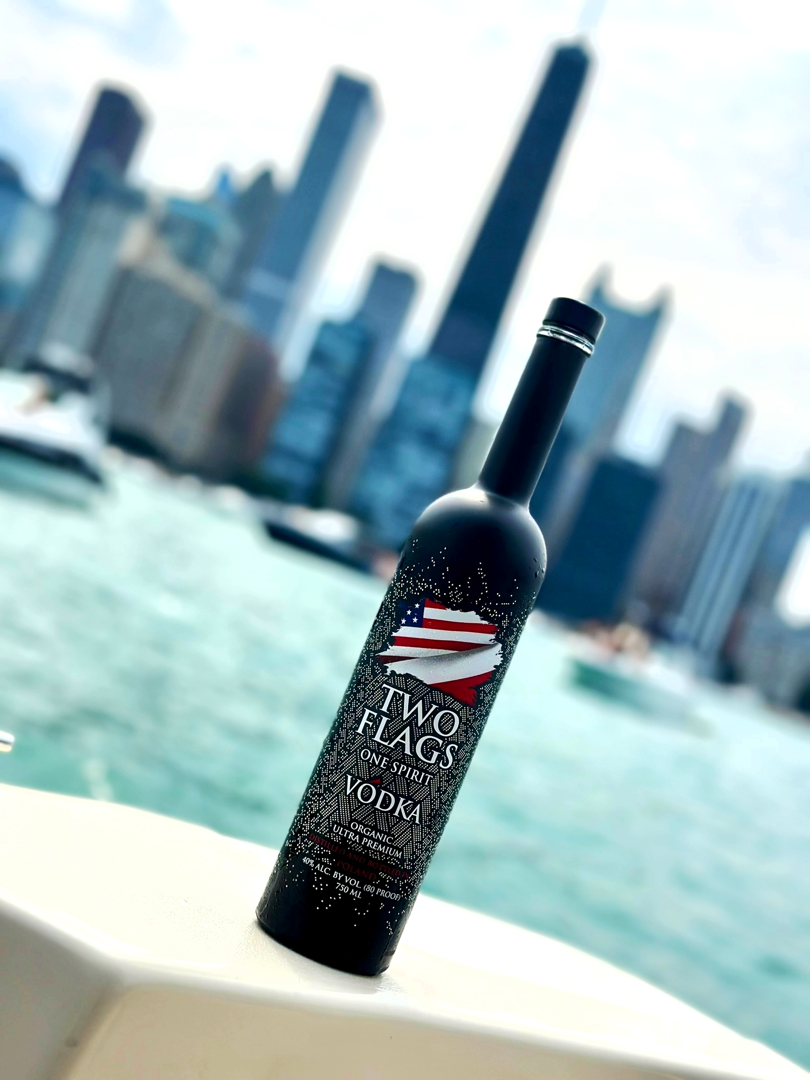
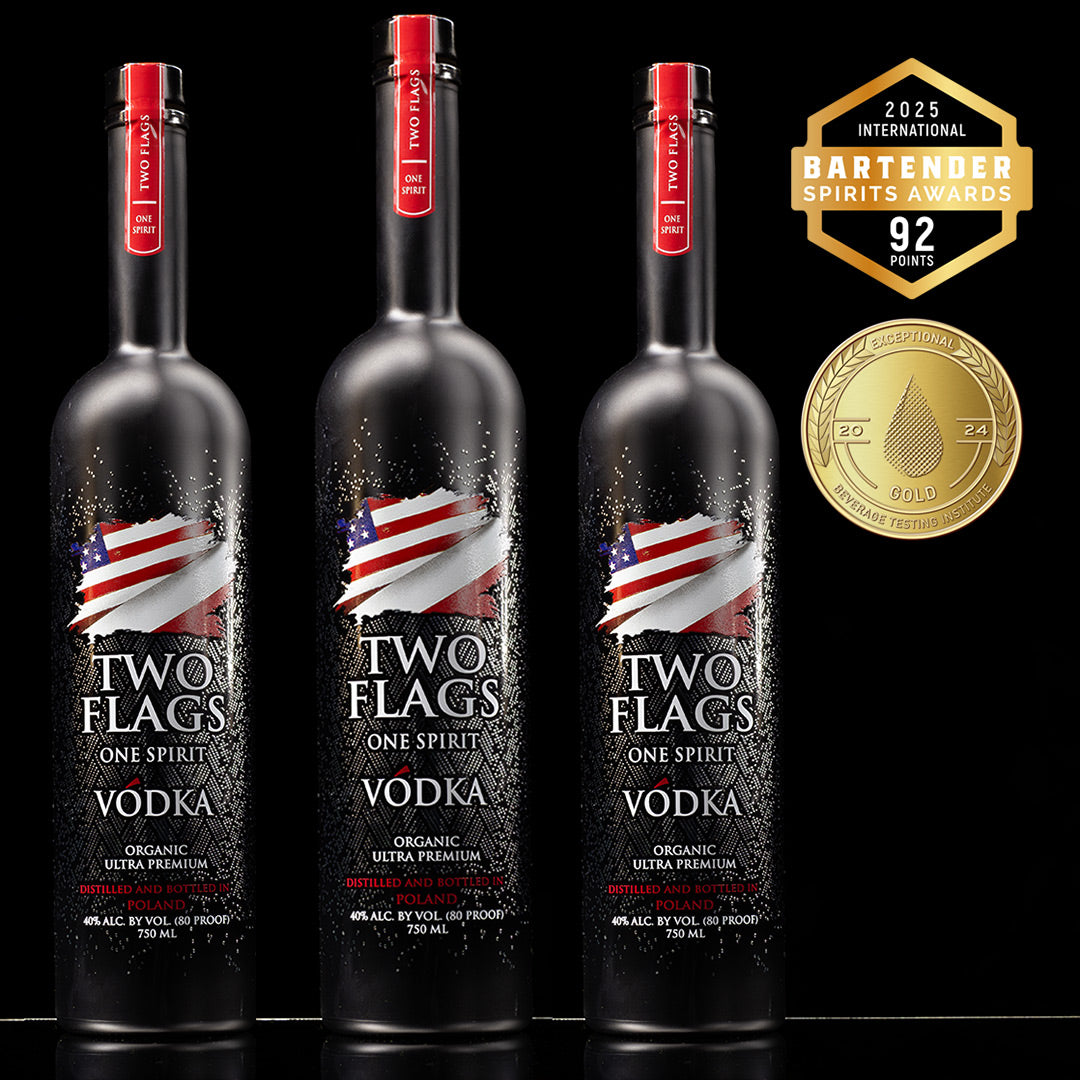
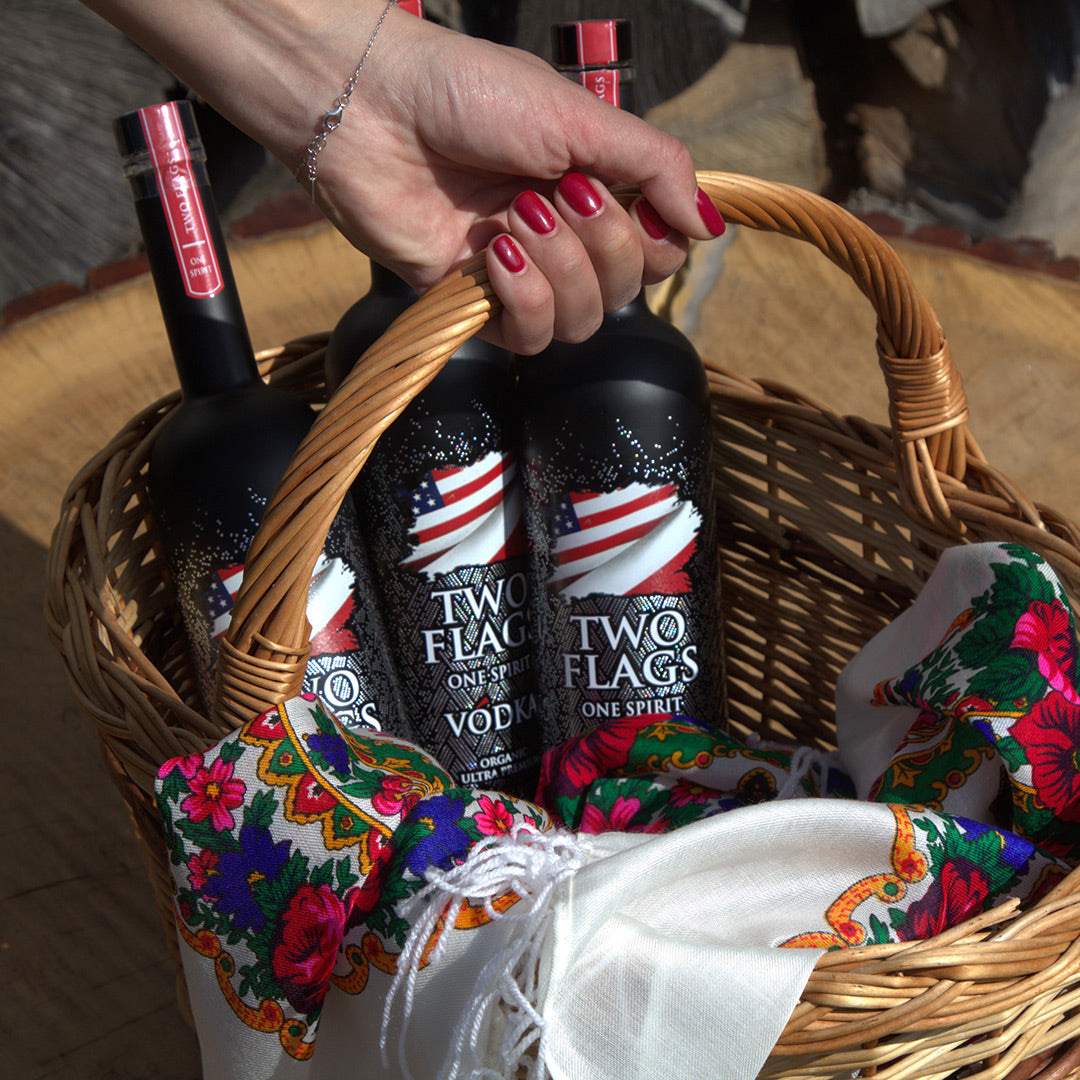
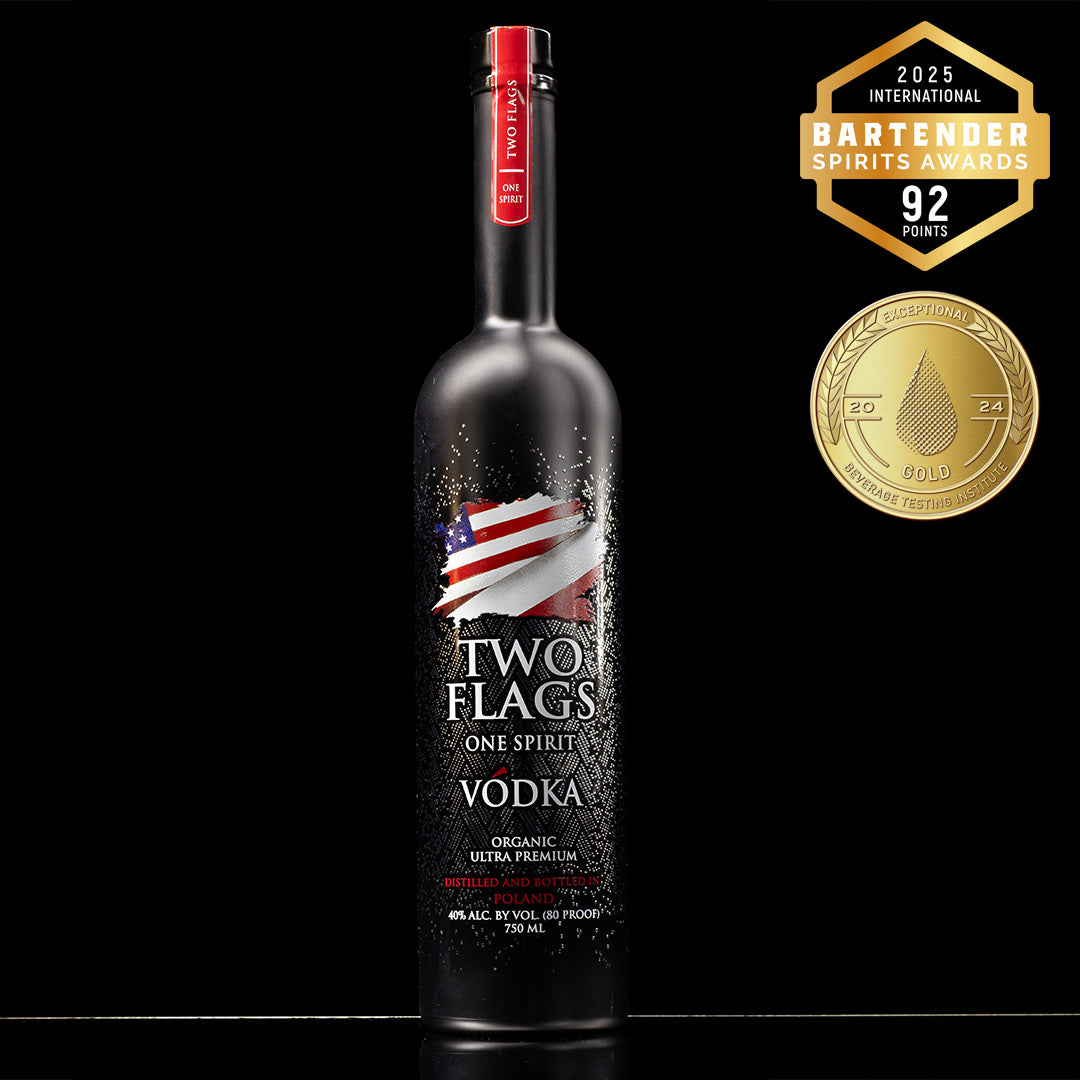
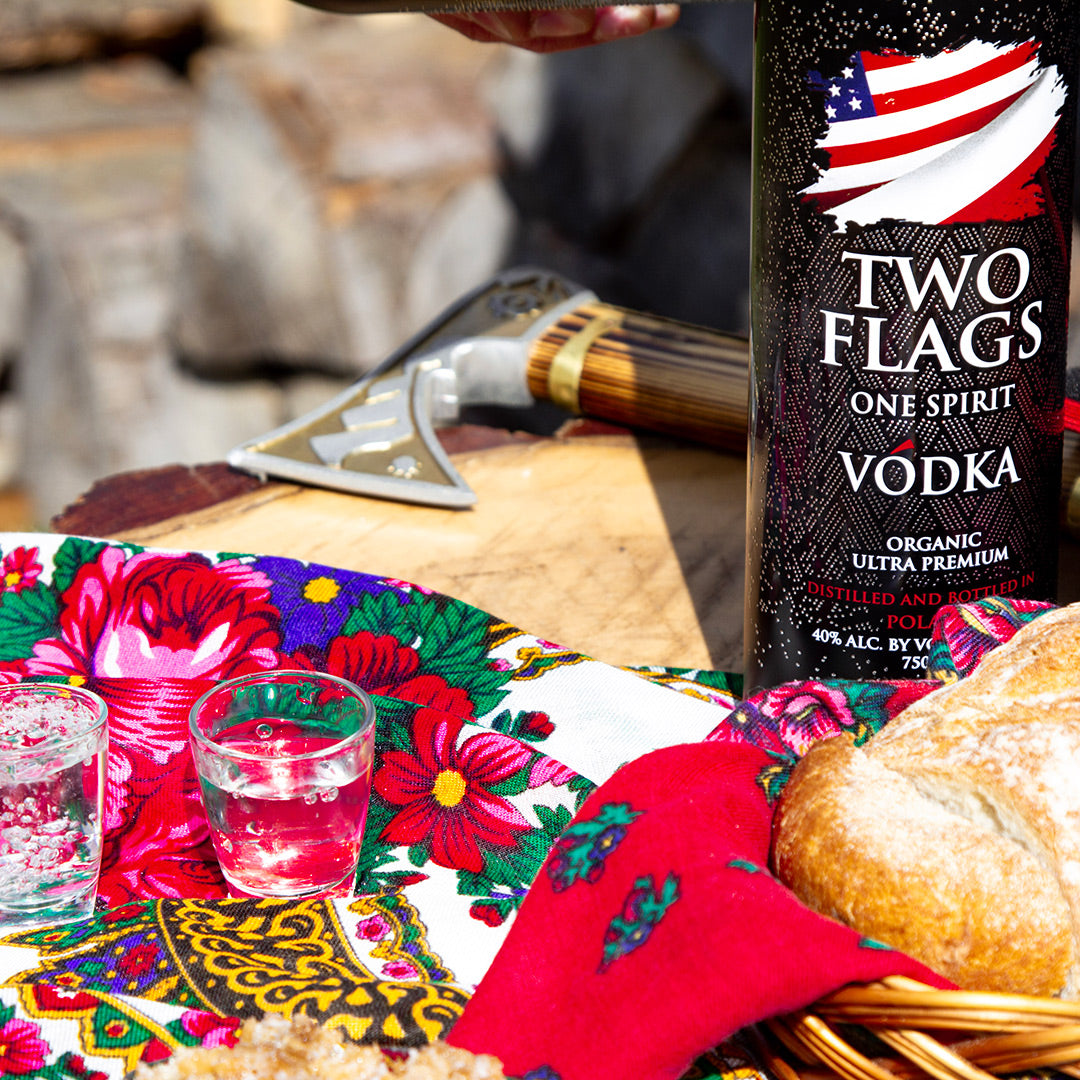
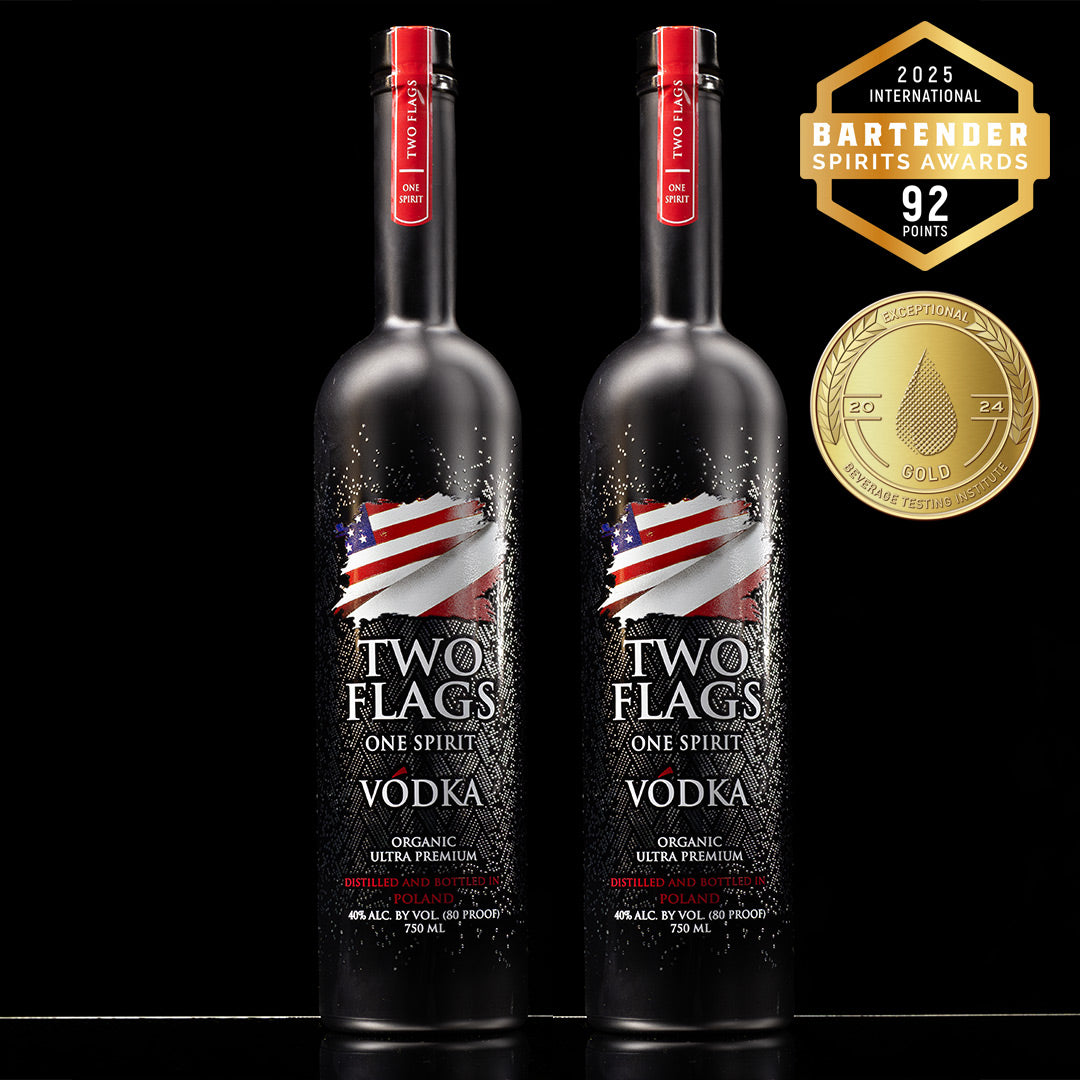
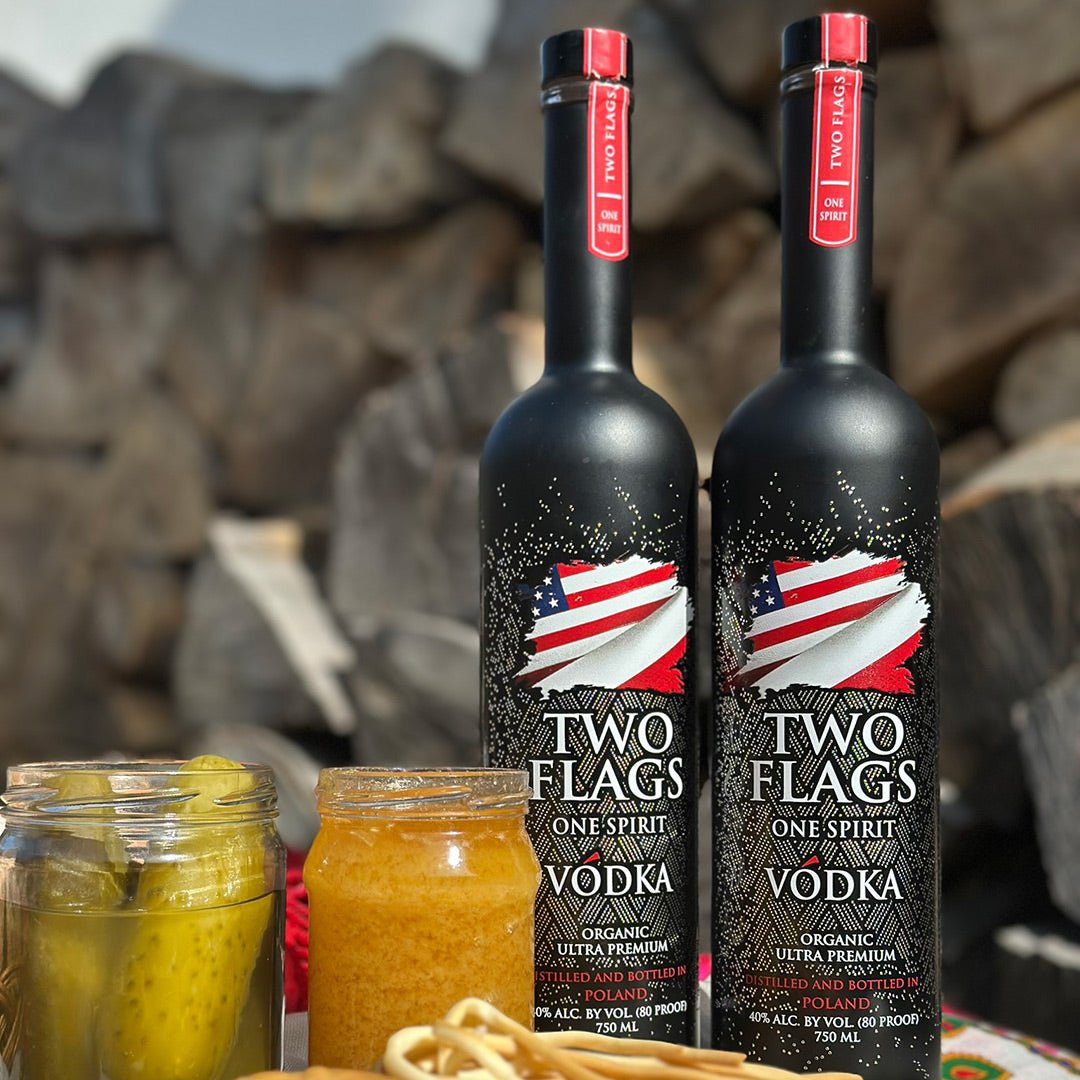
Leave a comment
This site is protected by hCaptcha and the hCaptcha Privacy Policy and Terms of Service apply.